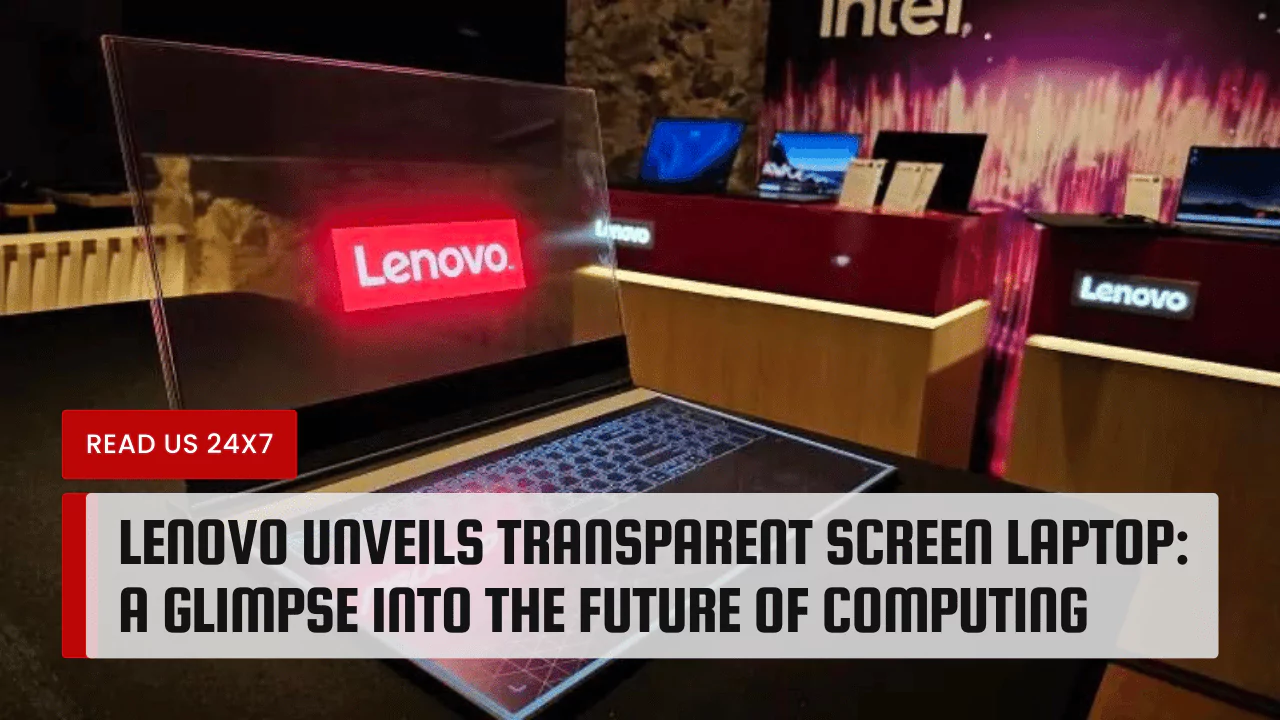Chinese tech giant Lenovo recently showcased a groundbreaking prototype laptop featuring a see-through screen, marking a significant leap in technological innovation. This article delves into the unveiling of Lenovo’s transparent screen laptop and explores its potential impact on the future of computing.
Lenovo’s Transparent Laptop Concept
The highlight of Lenovo’s latest innovation is its 17.3-inch bezel-free screen, which offers users a unique visual experience. Unlike conventional laptops, Lenovo’s transparent screen allows users to see objects behind the display, blurring the line between the digital and physical worlds.
Enhancing user interaction, the laptop features a touch-sensitive keyboard, providing a seamless navigation experience. With the inclusion of a stylus, users can effortlessly draw, annotate, and interact with content on the transparent screen, opening doors to endless creative possibilities.
Expected Debut at MWC 2024
Lenovo’s transparent laptop concept is reminiscent of augmented reality (AR) technology, where digital content overlays the real-world environment. This innovative approach transforms how users perceive and interact with digital information, offering a glimpse into the future of computing.
Set to debut at Mobile World Congress (MWC) 2024, Lenovo’s transparent laptop showcases the company’s commitment to pushing the boundaries of technological advancement. With its unveiling at one of the world’s premier mobile industry trade shows, Lenovo aims to captivate audiences and set new standards for innovation in the tech industry.
Implications and Potential Uses of Transparent Screens
The introduction of transparent screens carries significant implications for various industries and user experiences. One potential advantage lies in enhanced privacy, as users can selectively display content while maintaining visibility of their surroundings. This feature could revolutionize privacy settings and enable users to interact with sensitive information discreetly.
Furthermore, transparent screens unlock possibilities for creating interactive displays in various settings, from retail environments to educational institutions. Imagine interactive museum exhibits, where visitors can explore digital content overlaid on physical artifacts, or immersive learning experiences where students interact with virtual simulations in the classroom.
In the realm of gaming and entertainment, transparent screens offer a new dimension of immersion and interactivity. Gamers can experience virtual worlds overlaid on their physical surroundings, blurring the boundaries between reality and fantasy. Additionally, transparent screens could redefine home entertainment systems, offering viewers a captivating viewing experience with minimal visual obstruction.
In conclusion, Lenovo’s transparent screen laptop represents a paradigm shift in computing technology, offering users a glimpse into a future where digital and physical realities converge seamlessly. With its innovative features and potential applications, Lenovo’s transparent laptop paves the way for a new era of interactive computing experiences.



